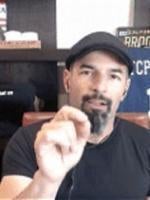As we reported yesterday, the Supreme Court has accepted cert. on a petition brought by Facebook to resolve an ongoing circuit split over the proper application of the Telephone Consumer Protection Act’s (TCPA’s) automated telephone dialing system (“ATDS”) definition. This decision comes on the heels of another Supreme Court ruling issued just this Monday in which the high court determined the TCPA is unconstitutional as written, but can be saved by altering First Amendment doctrine and giving the TCPA a haircut.
While the TCPA has certainly been in the Supreme Court’s gaze as of late, that is not particularly surprising. The TCPA is the single broadest restriction on constitutionally-protected speech in our nation’s history and also produces piles of the most complex (and expensive) class action litigation out there. Indeed, it is not uncommon for Defendants caught in the grips of a TCPA class action to face billions or even tens of billions in potential exposure based upon the statute’s immense statutory damages. And since no one really knows what technology the TCPA applies to–more on that below– the statute raises a host of constitutional issues–from First Amendment implications, void for vagueness problems, excessive fine issues and due process concerns.
Indeed, the TCPA is an absolute junker of a statute from a Constitutional perspective, and it is requiring much upkeep by the Supreme Court to keep running. While SCOTUS dodged precedent to keep the statute on the books this time, the next go round the TCPA might not be so lucky–eventually the Supreme Court is going to get tired of wasting its time on a statute that doesn’t even work the way it is supposed to.
While some issues applicable to the TCPA are esoteric, one is seemingly rather mundane– what technology does this thing even apply to? That question is trickier than it seems.
The statute’s language appears to apply only to calls made using a random or sequential number generators–and the legislative history shows that stopping random-fired calls is what the TCPA is all about. But the TCPA is the ONLY tool Congress has ever given the FCC or the Courts to regulate unwanted calls to cell phones. And in the face of a barrage of robocalls in recent decades that just isn’t much of an arsenal.
So although the TCPA is a bad fit for the job–again, its language is very narrow– past administrations of the FCC and some courts have taken it upon themselves to expand the statute to apply to all mass-dialed calls and texts. Without this expansion–the argument goes–they would be wholly empty-handed in the fight against robocalls.
The FCC rulings were recently set aside, however, throwing TCPAWorld into complete disarray with some courts applying the statute as written–i.e. to only apply to random-fired calls–and some courts applying the statute more broadly–i.e. to all automated calls. Its a battle between courts that apply the statute as written vs. courts that apply the statute as (they think) the statute should have been written.
This fracture has lead to extremely unusual–and highly problematic–circumstances. Some speakers are being held liable for speech they made years ago and a time that it was perfectly legal, only to see the law change in a way that makes their conduct potentially unlawful only in retrospect. Other speakers are being sued in far-off jurisdictions for speech that was legal both in the jurisdiction where the speech took place and in the jurisdiction where some unnamed class members reside. Some speakers have seen their speech deemed perfectly legal in some jurisdictions and the exact same speech is deemed illegal in separate jurisdictions. And all of this has been capitalized on by the Plaintiff’s bar that is happy to sue in favorable jurisdictions, even if the bulk of the conduct at issue took place in a jurisdiction with more defense-favored law.
Just how fractured TCPA ATDS landscape? I put together this handy heat map as a visual. Check it out:
The dark green are jurisdictions (the 7th and 11th Circuits) that follow the statutory definition–i.e. requiring random or sequential number generation to trigger the TCPA. The dark red are jurisdictions (the 2nd and the 9th Circuit) that eschew the statutory language in favor of an “all automated calls” approach to the TCPA. Light green jurisdictions (3rd and 5th) lean toward the statutory definitions and light red jurisdictions (1st and 8th) lean toward the expanded approach. Yellow jurisdictions (4th, 6th and 10th) may be the most problematic of all for speakers– whether the TCPA applies to their speech still very much turns on what courtroom they are sued in.
And again–what ultimately matters for determining liability is not where the calls were made, or even where the calls were directed–only where the resulting lawsuit is filed. Companies making calls from green jurisdictions to other green jurisdictions may still be sued in red jurisdictions by clever–or calculating– Plaintiff’s lawyers. Its despicable stuff but so long as the split of authority endures, so will these tactics.
For the curious I will do a breakdown later today of the state of the law in each circuit and how we got here. The point of this post, however, is just to VISUALIZE how fractured TCPAWorld really is, and just how badly clarity is needed.
More to come.




 />i
/>i

